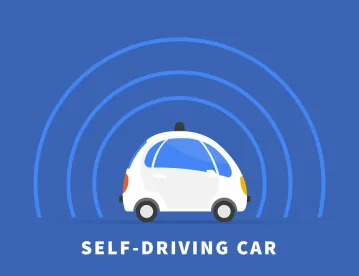While state attorney generals and Federal Regulators scramble to assemble regulations around autonomous vehicles and legacy car manufacturers look to avoid market-share erosion from unknown competitors, another group needs to closely watch the way autonomous vehicles and next-gen transit tech impacts their day to day life. Local governments units and businesses need to keep a keen eye out for, and be prepared to react to, the endless cycle of disruption that will inevitably hit their communities through the advent of autonomous vehicles and next-gen transit tech. In the not-so-distant future, local regulations and rules will change, methods for transporting people and goods will shift, and the way communities are designed, planned, and built will drastically alter. Businesses and local governments need to understand of how autonomous vehicles and next-gen transit technologies will impact other facets of day to day life, from government revenue loss to suburban dystopic sprawl and the impact both of these could have on local residents and businesses operations.
Semi-autonomous vehicles, ride-sharing, car-sharing, and bike-sharing already have a visible impact on the day-to-day life of the average commuter in many urban environment. Millennials are again, at fault for the fall of automotive sales since we would rather spend our money on Avocado Toast. All joking aside, emerging technologies and the companies implementing them are drastically changing the way people and products (including avocados) get from point A to point B. These companies and technologies have already fundamentally disrupted the way many legacy industries operate. Meanwhile, new entrants, including Amazon, Tesla, Maven, Boring Company, the Hyper-loop, and others will continue to upend the automotive and transportation sector for the foreseeable future.
Accurately predicting the impact these companies and technologies will have is nearly impossible. But, one thing is clear, their impact on communities and urban and suburban environments will be wide-sweeping and deep reaching. For many local government officials and business leaders, this means leveraging this emerging technology as a tool for greater prosperity and access, not an impediment to corporate, economic, and social growth.
A 2016 National League of Cities report estimates that “[s]elf-driving technology could allow cities to redevelop at least 50 percent of their current street parking permanently.” Similarly, Carlo Ratti, Director of MIT’s Senseable City Lab, which studies how technology will impact the built environment, predicts that up to 80 percent fewer cars will be required on any given highway due to autonomous vehicles. This could lead to shorter travel times, less congestion, and an overall smaller environmental impact compared to modern day transit systems. It also means smaller roads, and closer communities, leading to a more dense urban and suburban environment.
Shifting towards the sharing and autonomous economy can lead to an increased utilization of public transit as primary form of transit and autonomous cars, ride-shares, and bike-share programs as the last-mile connector to a destination. Further, this means cities could “reclaim [freeways, streets, and other] space[s] for sidewalks and dramatically expanding the public” and maker spaces available to pedestrians, bikers, and other modes of transit. It could result in a drastic shift in the design and planning of new-construction and their surrounding environs in both urban and suburban settings. While most modern projects are now driven, on a planning and cost basis, with municipality based parking minimums in mind, future developments could see the minimum parking requirement reduced. This may result in more audacious and experimental development projects focusing on mixed-use projects versus the current slate of developments being constrained by parking spot design and number minimums. Even more radical predictions include the repurposing of parking lots, parking space, and parking garages as housing, retail outlets, and entertainment spaces as current property owners look to monetize on a more dense and intimate urban environment.
While removing street parking and parking structures for wider sidewalks, more public space, and autonomous only lanes is and appealing idea, it does not address the revenue-generation impact this will have on local and state governments. Current estimates find that autonomous and next-generation transportation technology will lead to an annual combined revenue shortfall of over $5 billion for state and local governments in automotive related revenues. This includes include everything from car registrations and gas-tax revenue, to traffic tickets and parking fees. Revenue losses aside, the risk of pushing residents further and further from urban cores is a real concern of many urban planners and government officials.
The Institute of Transportation Studies at the University of California, Davis finds that “the convergence of three new technologies—automation, electrification, and shared mobility” could bring with it a “new wave of automation-induced” dystopia full of exurb sprawl and transit congestion. Autonomous cars and transit methods have the potential to shuttle large quantities of people from the far reaches of a metro-area to the urban core at breakneck speed with little risk of accidents. While this has the potential to increase personal and professional productivity as well as commuter safety, it also means there is little incentive for people to remain close to their urban cores and thus driving people further and further from the city-center. This means disruption of formerly natural habitats, increased time spent on the road, and less revenues in urban centers that are in desperate need of those tax dollars. In the future, commuters could communicate, entertain, work, and even rest in their autonomous cars and thus increases the distances people are willing to commute on a day-to-day basis. While appealing as this may sound to some, the concerns on an urban-planning standpoint raise multiple alarms and concerns for a dystopic, autonomous induced future. If autonomous vehicles dramatically lower driving costs and give people a new incentive to take to the road, streets could be overwhelmed. Suburban sprawl would increase rapidly as high-speed driverless cars cut commute times and make it profitable for builders to construct new subdivisions in distant exurbs.



 />i
/>i
